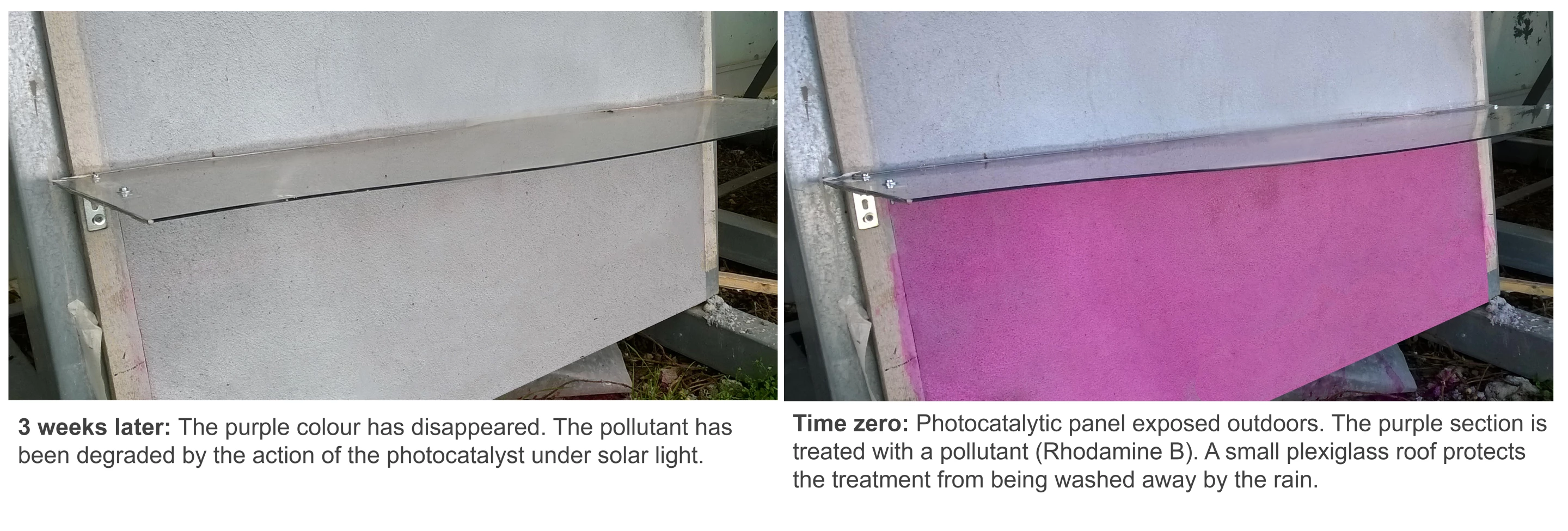A team of engineers has combined graphene and titanium dioxide nanoparticles to create a new solar-powered catalyst that can pluck pollutants out of the air, much more efficiently than others. The catalyst could be coated onto building or street surfaces to improve air quality in cities.
While carbon dioxide often hogs the headlines about atmospheric pollution, it’s far from the only villain up there. Nitrogen oxides (NOx) and volatile organic compounds are emitted by vehicle exhausts and industrial processes, contributing to smog and harming human health.
In the last few years, researchers have experimented with using titanium dioxide nanoparticles – also known as titania – to clean up this kind of air pollution. Titania works as a photocatalyst, meaning once it’s activated by light it breaks down pollutants. This has been put to work in air-purifying concrete and aluminum building panels, as well as water filters.
In past work, titania surfaces have been shown to have efficiencies of up to 45 percent at converting atmospheric NOx into harmless nitrate. For the new study, the team managed to boost this up to 70 percent. The secret ingredient? Graphene.
The researchers used liquid phase exfoliation to peel layers of graphene off of the base material graphite, but with one new tweak to this common process – they added titanium dioxide nanoparticles to the mix. This allowed them to create a new graphene-titania nanocomposite material.
This material can then be applied to surfaces like streets, sidewalks or the outside walls of buildings to passively clean the air. It’s powered completely by sunlight, and the nitrate that’s produced as a result is harmless and will wash off with the wind and rain.
"Photocatalysis in a cementitious matrix, applied to buildings, could have a large effect to decrease air pollution by reducing NOx and enabling self-cleaning of the surfaces – the so-called ‘smog-eating' effect,” says Xinliang Feng of Graphene Flagship, one of the organizations behind the study. “Graphene could help to improve the photocatalytic behavior of catalysts like titania and enhance the mechanical properties of cement.”

The team tested the mix by making photocatalytic panels and exposing them to pollutants. In one test, they used rhodamine B, which has a similar molecular structure to volatile organic pollutants. When tested in water and activated by UV light, the team found that the graphene-titania composite degraded 40 percent more rhodamine B than a catalyst of titania alone.
In the next test, the researchers found that the graphene-titania catalyst degraded as much as 70 percent more atmospheric NOx than the plain titania catalyst.
"Coupling graphene to titania gave us excellent results in powder form – and it could be applied to different materials, of which concrete is a good example for the widespread use, helping us to achieve a healthier environment,” says Marco Goisis, research coordinator at Italcementi, another company involved in the study. “It is low-maintenance and environmentally friendly, as it just requires the sun's energy and no other input.”
As promising as these early results are, the team says that more work needs to be done before the technology an be commercialized. For one, graphene is still tricky to mass produce, but plenty of scientists are already working on that problem.
The work was conducted by the Graphene Flagship, the University of Bologna, Politecnico di Milano, CNR, NEST, Italcementi HeidelbergCement Group, the Israel Institute of Technology, Eindhoven University of Technology, and the University of Cambridge.
The research was published in the journal Nanoscale.
Source: Graphene Flagship





